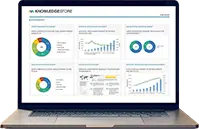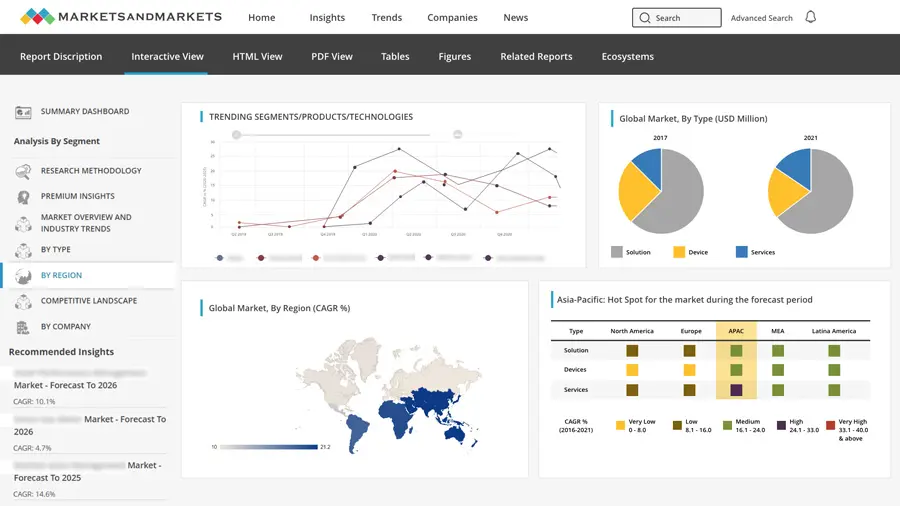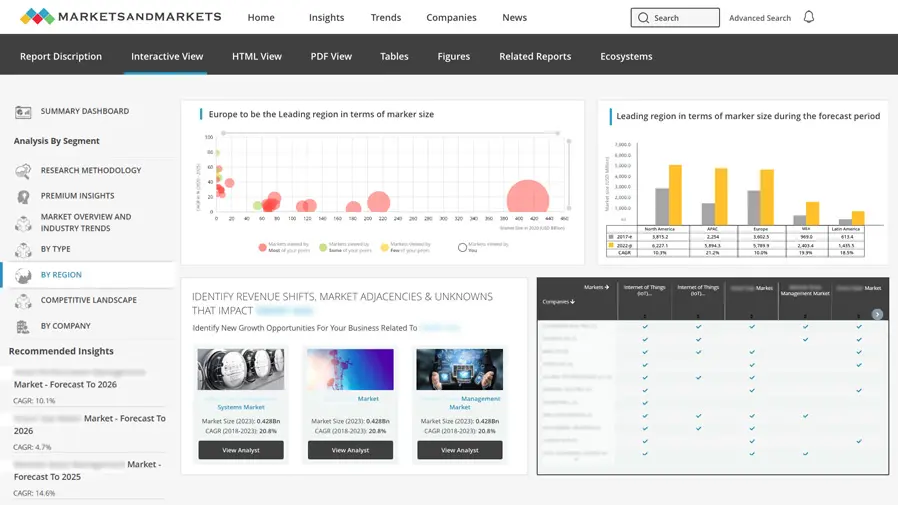Defence Situational Awareness Market by Technology (AI, IoT, Advanced Sensors, Communication Systems), Offering (Hardware, Software, Services), Application (Threat Detection, Mission Planning, Real-Time Monitoring), End-Use Industry (Defense, Homeland Security, Government Agencies) and Region – Global Forecast to 2030
Overview
The Defence Situational Awareness (DSA) market focuses on providing advanced tools and technologies to enhance real-time decision-making and operational awareness in military and defense operations. These solutions integrate technologies such as Artificial Intelligence (AI), Internet of Things (IoT), and advanced sensors to deliver actionable intelligence, support mission-critical operations, and mitigate risks. Increasing geopolitical tensions, technological advancements, and military modernization programs are propelling the market's growth.

Technological Advancements Driving Growth
The Defence Situational Awareness (DSA) market is witnessing a surge in innovation, driven by advancements in sensor integration, AI-powered analytics, and real-time data sharing technologies. These advancements enable faster and more accurate threat detection, improving mission outcomes in complex environments. AI algorithms process vast datasets to provide actionable insights, enhancing the situational awareness of commanders in combat scenarios. This technological evolution is reshaping how defense forces approach operational planning and threat mitigation.
Attractive Opportunities
- AI and Machine Learning Integration: Advanced algorithms enhance threat detection, data analysis, and predictive modeling for combat readiness.
- IoT-Enabled Systems: IoT provides seamless connectivity among devices, ensuring uninterrupted information flow and situational insights.
- Focus on Cybersecurity: As military systems become interconnected, safeguarding critical information and systems from cyber threats is an expanding priority.
- Rising Defense Budgets: Countries are investing in next-generation technologies to improve battlefield awareness and operational efficiency.
- Commercial Applications: Beyond defense, the technologies are gaining adoption in sectors like public safety and disaster management.
Adoption of IoT in Defense Operations
The integration of the Internet of Things (IoT) into DSA systems has revolutionized how military units monitor and respond to threats. IoT devices, such as smart sensors and connected communication equipment, provide seamless interoperability between assets in the field. This connectivity allows for real-time data sharing, situational reporting, and streamlined coordination, even in geographically dispersed operations. IoT’s role is particularly significant in urban warfare and disaster relief missions, where time-sensitive intelligence is critical.

Global Market Dynamics
-
Drivers:
- Growing need for real-time operational intelligence.
- Rising investment in autonomous systems and unmanned vehicles.
- Expanding military modernization programs in emerging economies.
-
Restraints:
- High cost of deployment and maintenance.
- Complexity in system integration.
-
Opportunities:
- Adoption of cloud-based situational awareness platforms.
- Advances in satellite communication technologies.
Focus on Cybersecurity in Situational Awareness
With increased reliance on digital platforms and interconnected systems, cybersecurity has become a core focus in the DSA market. The potential for cyberattacks to disrupt critical defense operations has prompted investments in secure communication protocols, encryption technologies, and threat detection systems. Advanced cybersecurity measures ensure that situational awareness platforms remain resilient against potential adversarial threats, safeguarding mission-critical data and infrastructure.
Global Market Ecosystem Analysis
The ecosystem includes hardware manufacturers, software developers, system integrators, and service providers working collaboratively to deliver integrated DSA solutions. The value chain involves:
- Component Suppliers: Providing radar, sensors, and communication equipment.
- Platform Developers: Offering integrated software for data analysis and visualization.
- End-Users: Military forces, governments, and defense agencies.
Recent Developments in the Market
- Adoption of AI-driven analytics to predict and respond to threats more effectively.
- Partnerships between defense organizations and tech companies for R&D in autonomous systems.
- Deployment of advanced satellite-based observation platforms for surveillance and reconnaissance.
Regional Growth Opportunities
North America leads the global DSA market, attributed to its robust defense budget and early adoption of advanced technologies. However, the Asia-Pacific region is emerging as a lucrative market, fueled by increased defense spending and growing geopolitical tensions. Countries such as China and India are actively investing in situational awareness technologies to modernize their military capabilities. Europe also remains a strong contender, with NATO-led initiatives emphasizing the importance of DSA in coalition operations.
Key Market Players
-
Lockheed Martin Corporation
- Leader in developing advanced situational awareness systems and defense technology.
-
Northrop Grumman Corporation
- Innovator in radar systems and cybersecurity solutions.
-
BAE Systems
- Provides military-grade geospatial analysis and tactical systems.
-
Thales Group
- Specializes in C4ISR (Command, Control, Communications, Computers, Intelligence, Surveillance, and Reconnaissance).
-
Raytheon Technologies
- Focuses on network-centric systems and threat detection.

Want to explore hidden markets that can drive new revenue in Defence Situational Awareness Market?
 Scope of the Report
Scope of the Report

Want to explore hidden markets that can drive new revenue in Defence Situational Awareness Market?

- Technology: Covers developments in AI, IoT, and sensor technologies driving situational awareness solutions.
- Applications: Emphasis on defense operations, threat detection, disaster management, and critical infrastructure protection.
- Regions Covered: North America, Europe, Asia-Pacific, Middle East & Africa, and Latin America.
- Forecast Period: 2024–2030.
Strategic Collaborations and R&D Investments
The market is seeing increased collaboration between defense agencies and private technology firms to accelerate innovation in DSA solutions. Governments are funding R&D projects to develop next-generation capabilities, including autonomous systems and satellite-based situational awareness platforms. Additionally, partnerships between software developers and hardware manufacturers ensure that integrated solutions meet the complex needs of modern warfare. These strategic alliances are fostering a competitive market landscape, driving continuous innovation and growth.
Frequently Asked Questions (FAQs):
What is the current size of the Defence Situational Awareness Market?
The market is valued at approximately $XX billion in 2024 and is projected to grow at a CAGR of XX% by 2030.
Which technology dominates the DSA market?
AI and IoT are the most transformative technologies, enabling real-time threat detection and enhanced operational coordination
What are the key challenges in implementing situational awareness systems?
High costs, integration complexity, and cybersecurity threats are major challenges.
Which region is expected to lead the market growth?
North America, driven by significant defense investments and technological advancements, leads the market.
What future trends are shaping the DSA market?
Trends include integration with unmanned systems, quantum computing applications, and increased focus on cybersecurity.

Table of Contents
-
Executive Summary
1.1 Market Snapshot
1.2 Key Findings and Opportunities
1.3 Recommendations for Stakeholders -
Introduction
2.1 Report Objectives
2.2 Definition and Scope of the Market
2.3 Methodology and Data Sources -
Market Overview
3.1 Market Size and Forecast (2024–2030)
3.2 Historical Market Trends and Analysis
3.3 Key Market Drivers and Restraints -
Attractive Opportunities in the Defence Situational Awareness Market
4.1 Emerging Technologies Transforming Defence Situational Awareness
4.2 Growth Opportunities in Key Regions
4.3 Investment Trends and Potential Areas -
Global Market Dynamics
5.1 Drivers: Rising Need for Enhanced Battlefield Communication
5.2 Restraints: Budget Constraints in Developing Economies
5.3 Opportunities: Adoption of AI and IoT in Defence Systems
5.4 Challenges: Cybersecurity Concerns -
Global Market Ecosystem Analysis
6.1 Value Chain Analysis
6.2 Key Stakeholders
6.3 Supply Chain Overview -
Technology Analysis
7.1 Artificial Intelligence (AI) in Defence Systems
7.2 Internet of Things (IoT) Applications
7.3 Advanced Sensors and Communication Systems
7.4 Integration of Cloud and Edge Computing -
Market Segmentation by Offering
8.1 Hardware
8.2 Software
8.3 Services -
Market Segmentation by Application
9.1 Threat Detection
9.2 Mission Planning
9.3 Real-Time Monitoring -
Market Segmentation by End-Use Industry
10.1 Defense
10.2 Homeland Security
10.3 Government Agencies -
Regional Analysis
11.1 North America
11.1.1 Market Size and Forecast
11.1.2 Key Trends and Developments
11.2 Europe
11.2.1 Market Size and Forecast
11.2.2 Key Trends and Developments
11.3 Asia Pacific
11.3.1 Market Size and Forecast
11.3.2 Key Trends and Developments
11.4 Middle East & Africa
11.4.1 Market Size and Forecast
11.4.2 Key Trends and Developments
11.5 South America
11.5.1 Market Size and Forecast
11.5.1 Key Trends and Developments -
Competitive Landscape
12.1 Market Share Analysis of Leading Players
12.2 Key Strategies Adopted by Players
12.3 SWOT Analysis of Major Competitors -
Recent Developments in the Market
13.1 New Product Launches
13.2 Strategic Partnerships
13.3 Mergers and Acquisitions -
Key Market Players
14.1 Company Profiles
- Overview
- Financial Performance
- Product Portfolio
- Strategic Initiatives -
Scope of the Report
15.1 Research Coverage
15.2 Assumptions and Limitations -
Frequently Asked Questions (FAQ)
16.1 What are the key growth drivers in the Defence Situational Awareness Market?
16.2 How are emerging technologies influencing market trends?
16.3 Which region holds the largest market share?
16.4 What are the major challenges in market adoption?
16.5 Who are the leading players, and what are their strategies?














Growth opportunities and latent adjacency in Defence Situational Awareness Market